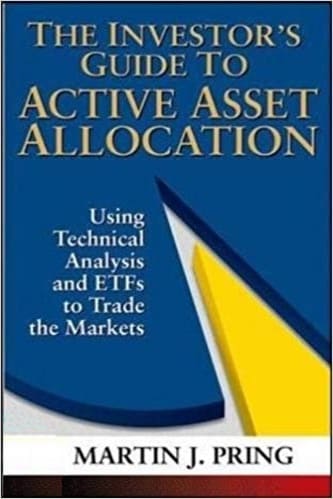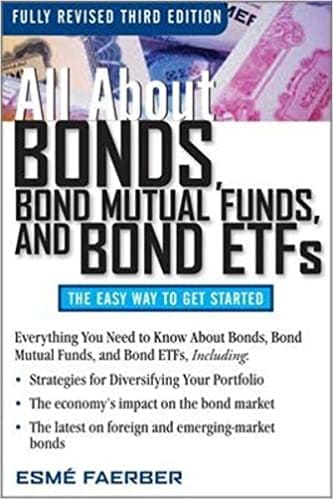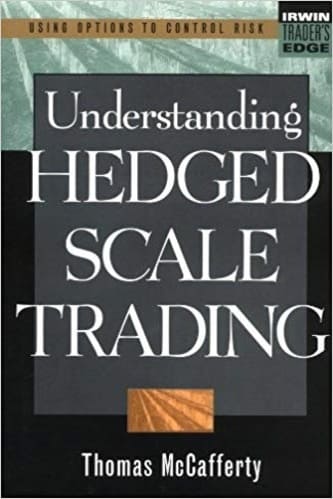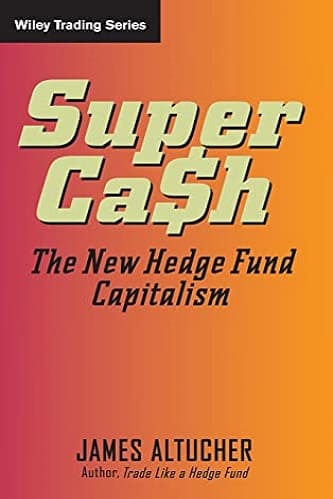Articles
Are Leveraged Sector ETFs For You By L.A. Little
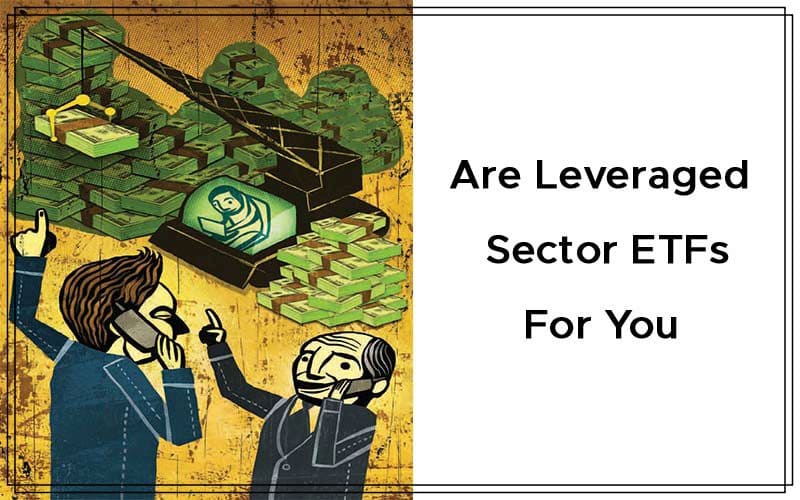
In 1992, the American Stock IN Exchange (Amex) petitioned the Securities and Exchange Commission (Sec) to create a stand-alone index-based exchange traded fund (ETF). Upon Sec approval, Amex rolled out the first ETF product: the S&P Depository Receipts Trust Series 1, or Spdrs (Spy). It gained widespread acceptance as a way to diversify (reduce risk) and mimic the broader market of the 500 largest capitalized stocks on the New York Stock Exchange (NySe). Others followed, with the diA, which tracks the Dow Jones Industrial Average, and the QQQ (later to become the QQQQ), which tracks the 100 largest-capitalization NASdAQ stocks. In the past couple of years, the market has seen a plethora of leveraged ETF products. What are these and do they have a place in your portfolio?
What is a Leveraged ETF?
Typically, a leveraged ETF is an exchange traded fund based upon an already familiar index but provides investors with some extra juice — leverage. The goal of the leveraged ETF is to increase the returns of the underlying index for a given time frame (each day) by using financial derivatives (like options, swaps, and index futures) to provide a higher-octane return than the nonleveraged ETF. In layman’s terms, they take every dollar you invest when buying the ETF and then borrow another dollar against it to create a leveraged ETF. The leverage occurs on a daily basis and that’s the crucial difference between nonleveraged and leveraged ETF products.
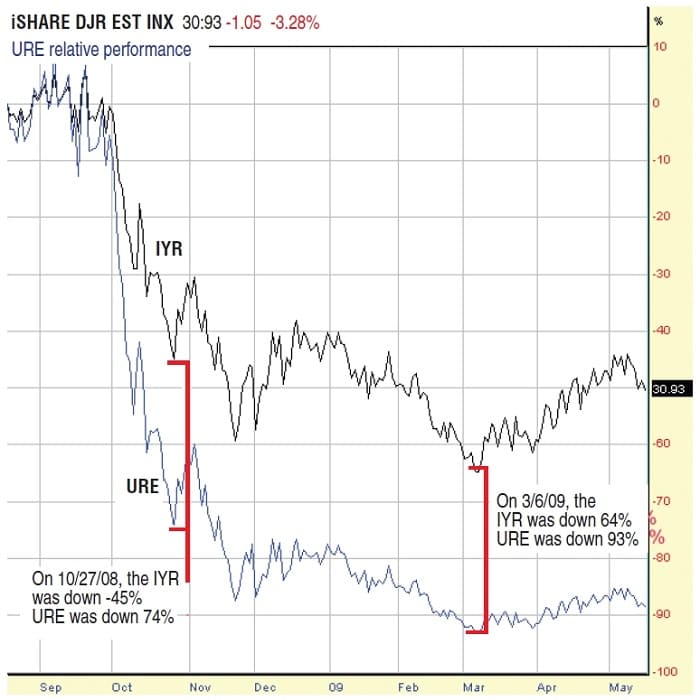
FIGURE 1: ISHARES DOW JONES US REAL ESTATE INDEX FUND (IYR) AND PROSHARES ULTRA REAL ESTATE (URE). Both these are based on the Dow Jones US Real Estate Index. You would expect the IYR to be a flatter line since it doesn’t carry leverage and URE would be about double the IYR since it is 2:1 leverage instrument. But it doesn’t look that way.
In Figure 1 you see a chart of one such paired product. This is the iShares Dow Jones US Real Estate Index Fund (iyr) and its leveraged counterpart, the ProShares Ultra Real Estate (Ure). Since they both are based upon the Dow Jones US Real Estate Index, you would think that the chart would show the iyr as a flatter line (since it carries no leverage) and the Ure would roughly double that line both on the upside and the downside (since it is a 2:1 leverage instrument).
What we find, however, is not an exact 2:1 ratio. Note the two points shown on the chart where the ratio is clearly not at 2:1. In fact, most of the chart is not a 2:1 ratio that you study, and the exact ratio varies over time. In this particular case, the slippage is not horrible, although it is quite significant. In other ETF products, it borders on ludicrous. It’s not what you would intuitively think and for the uninformed, it has and is likely to lead to significant losses due to the intuitive expectations as opposed to the reality. Most investors simply do not understand that the leverage is reset every day and thus the 2:1 relationship is guaranteed to not remain the same over time.
Suggested Books and Courses About Hedge and ETF Funds
In Figure 2 is another chart that graphically shows just how far the relationship between the underlying index (in this case the iyr) can vary from the leveraged product. This is the same chart with the ProShares Ultra Short Real Estate (SrS) superimposed onto it. Note that the SrS is simply the inverse of the Ure (a 2:1 inverse of the iyr). As you can see, the intuitive relationship is completely lost between these products.
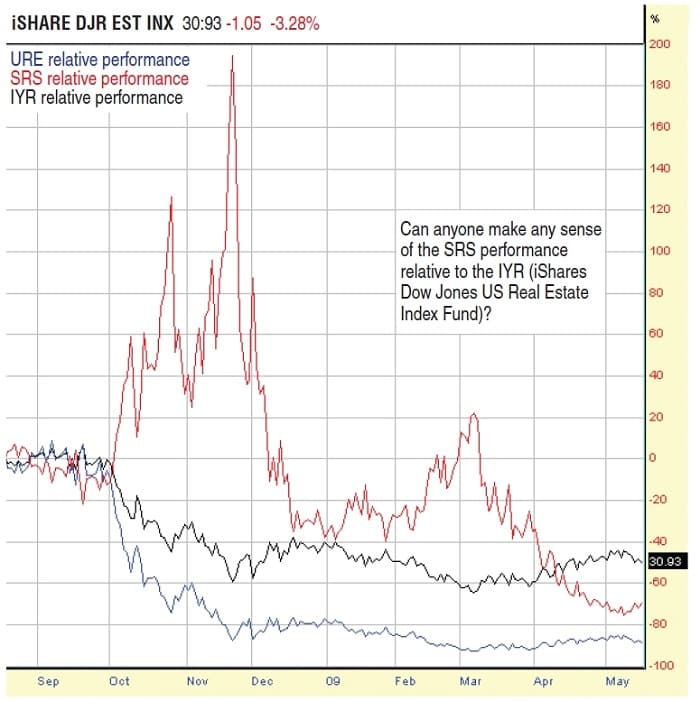
FIGURE 2: RELATIONSHIP BETWEEN UNDERLYING INDEX (IYR) AND LEVERAGED PRODUCT (SRS). The SRS is a 2:1 inverse of the URE. As you can see, the intuitive relationship between these products is lost.
Caveat Emptor
Now, you may think that the SrS-to-iyr comparison is just the outlier case, the one case where the 2:1 ratio breaks down for whatever reason, but you would be wrong. You can pull up almost any ETF with a counterpart 2:1 ratio and see the same issue. In fact, there are many that are even worse than those shown here. Just look at the financial index if you want to see even larger swings that defy intuition. These instruments can be successfully traded, but the key is that you cannot buy and hold leveraged instruments. You can only trade them. If you are a trader and you are reasonably good at timing entries and exits on a short-term time frame (days at most), these leveraged ETF products can be traded profitably and lead to enhanced gains for your portfolio — but you have to trade them.
As Figure 2 shows, these products do not track the under-lying index on a 2:1 ratio. In fact, the relationship is completely lost at times. If you are on the right side of that trade, it can be huge. As a trader of 2:1 and 3:1 ETF products, the gains and losses come fast, but if you trade them with smaller size, average in and out and have the discipline to take a loss when needed, the percentage returns are large and they occur quickly.
For anyone who wishes to buy and hold a particular sector or a broad index, then stay away from the leveraged ETF products. They are not the trading vehicle for you. Stay with the Spy, or the QQQQ, or the sector ETF like semiconductor HoldrS (SmH) or Financial Select Sector Spdr (xlf). You can buy or sell short those vehicles and keep them over longer periods. Nonleveraged ETF products act like the underlying stocks that compose that index or this sector ETF. The leveraged vehicles do not. Although they are related to the underlying stocks in the index or sector, they do not move in 2:1 or 3:1 percentage moves over a longer period because they reset each day. They only move with the 2:1 ratio on a daily basis, but if the underlying issues move the same way for more than a few days, the gains or losses in the leveraged ETF will begin to vary from the 2:1 ratio — and it can vary widely.
L.A. Little is an author, professional trader, and money manager. His new book, Trade Like The Little Guy, shows small traders how they can consistently profit in the markets.

